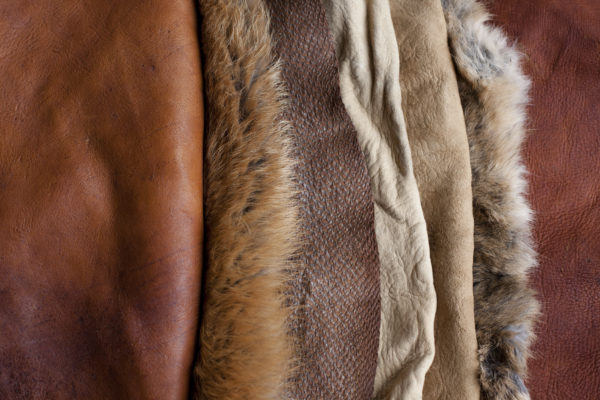
Traditional hide tanner, Jessie Watson Brown, offers her thoughts on the ethics of leather tanning, from large-scale industrial tanning, to home-scale natural tanning.
To begin, ethics are a matter of personal opinion, so I will make no attempt to answer this question directly. It is up to each person to choose, and this article comes through explaining my journey with tanning and working with skins, and how I approach this.
So, you ask if tanning is ethical, and there are a number of answers, as there are many types of tanning.
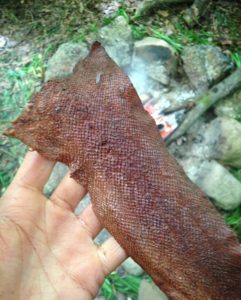
Commercial tanning
Chemical commercial tanning is the most common tanning method, creating about 80% of all leather. This often takes place in developing countries where environmental and worker laws are more slack, so they can get away with more damage. Often this is chrome tanning, from which the excess chromium waste is leached into water, rivers and land, and harms plant and animal life, as well as local people.
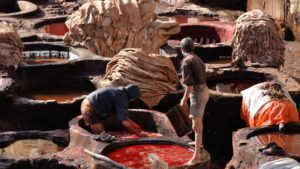
In addition, factory farmed animal skins are mainly used, or skins from farms in developing countries with little or no animal rights law enforcement. It is commonly assumed that these skins are ‘waste’ products from the meat industry, when in fact the selling of skins acts more like a subsidy to the meat industry, sometimes supporting otherwise unprofitable farming. Workers are exposed to a number of chemicals and other risks, and the incidence of cancer and other long term diseases is well documented as higher for tannery workers.
So in my opinion, that tanning is not ethical, to land, people or animals… and obviously thats not the type of tanning I do.
If you still want to use leather, one way to avoid the chemicals is to buy vegetable tanned leather. From a long tradition of bark tanning here in Europe, there is only one traditional oak tannery left in the UK, and they use an age-old technique to beautifully tan cow hides.

For most small-scale, traditional tanners, it is a very different picture to the big commercial processes.
For me, it is no light matter to be working with a dead animal. I grew up vegetarian and vegan until a few years ago, and only started eating meat when I found roadkill and culled rabbits and learnt to process them myself. For me, the whole process is about having a deeper connection with life, and making beauty from waste. It is about the importance of using all parts of an animal, as an honouring of life and death.
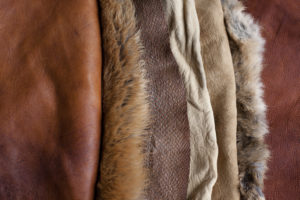
Obtaining skins
The skins we mostly use are from waste products:
We tan deer skins that would have been thrown away from local deer stalkers – who are managing the deer populations for the health of the deer (culling sick or injured) and the health of our landscape and forest regeneration. In many places in the UK we have an overpopulation of deer who are hindering the regrowth of forest, due to there being no remaining natural predators like wolf or lynx. Deer are also often considered pests for farmers who grow crops and are culled here too.
It is a similar case with rabbits culled from farmland. The fur we tan is mostly rabbit fur – thrown away from a local rabbit shooter who sells the meat.

There is also sometimes fox fur – either road kill, or also being thrown away from culling on farms. Many farms that produce lamb or chicken or eggs cull their foxes, and these all get thrown away – so we sometimes take these to skin and tan. So even though I don’t necessarily agree with the outright killing of foxes, I even more don’t agree with the throwing away of something so precious and beautiful. To be clear this is not the controversial ‘fox hunting’ with dogs chasing the fox.
We also tan fish skins, thrown away from local fish mongers.
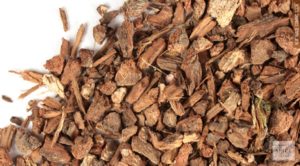
Tanning techniques
The types of tanning we do are the same as has been practiced since the first people started tanning – the processes are fully natural. We use either brains and smoke (oil tanning), or tree barks (bark tanning).
Both of these types of tanning produce no toxic or harmful waste and the solutions are safe enough to drink (technically!), so aren’t harmful to us or the environment. We harvest bark from a local saw mill who throw it away, from the oak planks they mill.
I feel good about the kind of tanning we do, it’s very low impact and requires very few tools or materials.
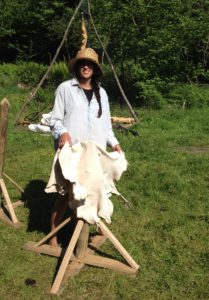
We also very much work by the seasons, a large part of producing nice soft leather is working the skin until it is dry and we wait for naturally dry sunny days for this, rather than heating rooms or running fans.
In the end, we have created a beautiful material, from waste products and our own hard work, something to be crafted into clothes and bags.
So this question is a complex one, and most tanned leather you see has been commercially farmed, and chemically tanned.
However there are other ways to go about tanning and I can say with integrity that I wouldn’t be doing it if I didn’t feel it was ethical.
If you want to learn more see our page on skins and hides.
The views expressed in our blog are those of the author and not necessarily lowimpact.org's




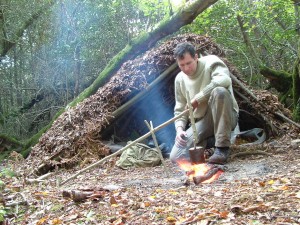 What’s the difference between survival & bushcraft?
What’s the difference between survival & bushcraft?
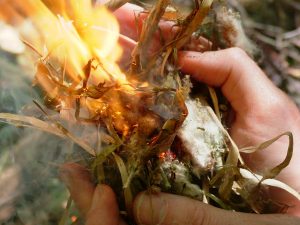 If society collapses, which skills will you wish you’d learnt?
If society collapses, which skills will you wish you’d learnt?
 How might hunter-gatherers have lived on this land?
How might hunter-gatherers have lived on this land?
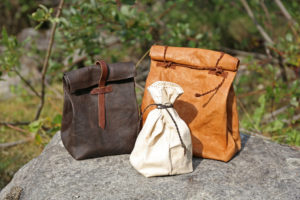 Tales of a winter working in a traditional tannery in Norway
Tales of a winter working in a traditional tannery in Norway
 Game / wild meat
Game / wild meat
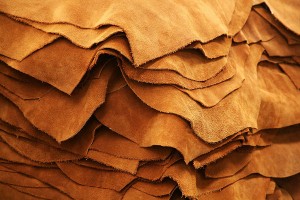 Leatherwork
Leatherwork
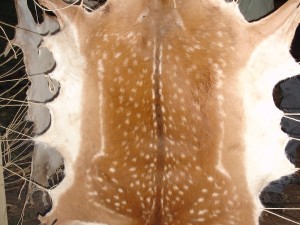 Skins & hides
Skins & hides


